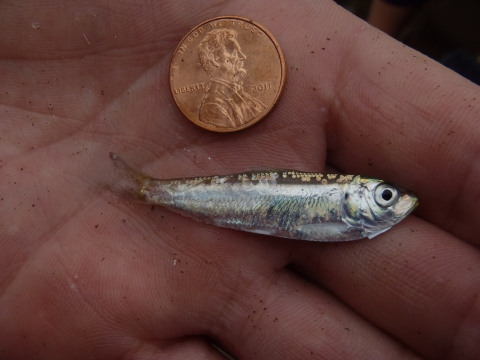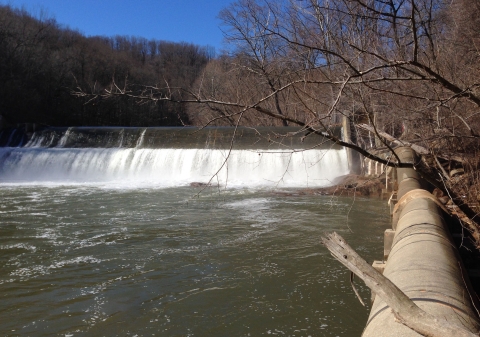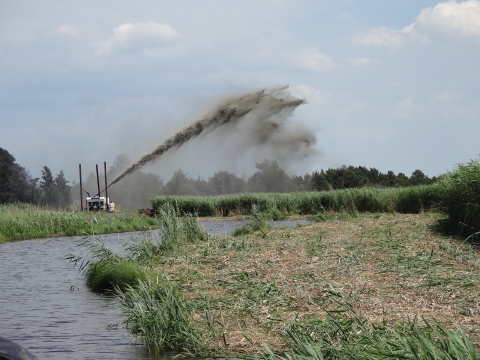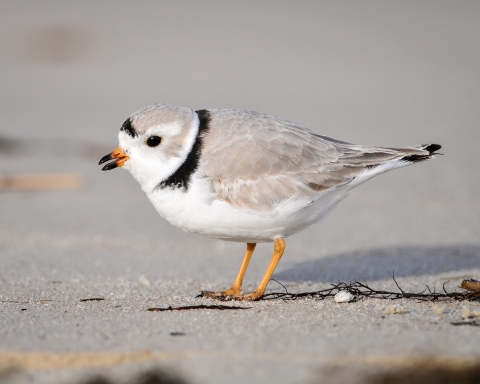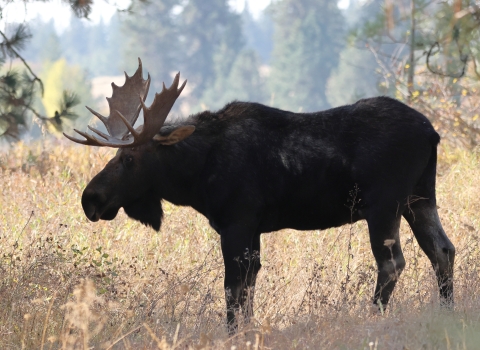In times of crisis, our actions need to be informed by our past and guided by our vision for the future. When life-altering circumstances like the pandemic and climate change climate change
Climate change includes both global warming driven by human-induced emissions of greenhouse gases and the resulting large-scale shifts in weather patterns. Though there have been previous periods of climatic change, since the mid-20th century humans have had an unprecedented impact on Earth's climate system and caused change on a global scale.
Learn more about climate change test our resilience, we must follow the science and choose adaptable solutions.
The Atlantic hurricane season runs from June 1 to November 30, and 2021 was the third most active year in terms of named storms. The year saw 21 named storms, four of which were major hurricanes, according to the National Oceanic and Atmospheric Administration.
It marked the sixth consecutive year of above-normal Atlantic hurricane activity, which researchers had predicted using an upgraded yardstick for comparing year-to-year hurricane activity. The prediction in May came after updating the climate normals to reflect data from the previous 30 years.
In the face of rising seas and more-formidable weather, we need a resilient coast that can absorb storm surge and wave energy and recover quickly, with little need for repair. Using natural infrastructure, we can create such a coast.
What does natural infrastructure look like? It looks like healthy salt marshes that soak up rising water like sponges and provide habitat for species such as the saltmarsh sparrow, whose numbers are declining rapidly. It looks like free-flowing rivers that reduce flooding of nearby communities and let fish swim from the ocean to historical spawning grounds.
And it looks like oyster reefs and other living shorelines that buffer coastal zones from wave erosion and create habitat for marine life.
In short, natural infrastructure provides solutions that benefit people and wildlife, improve with time, and have a high return on investment.
The Service and partners are well on the way to making natural infrastructure the new normal across the Atlantic Coast. Nearly a decade after Hurricane Sandy devastated communities and wildlife habitat from Florida to Maine, incredible work has been done — beaches, dunes, and marshes restored; dams removed; and living shorelines built.
This is what success looks like
In Maryland, the removal in 2018 of Bloede Dam on the Patapsco River — a collaboration of American Rivers, the state, the National Oceanic and Atmospheric Administration, the Service, and others — restored access to more than 65 miles of river habitat for migratory fish, including alewives and blueback herring, collectively known as river herring.
Last spring, the Maryland Department of Natural Resources, which owned the dam, found both species of river herring above the dam’s former site. It marks the first time the species has been known to make it that far upriver since Bloede was built more than a century ago.
These economically and ecologically important fish experienced significant population declines throughout the region, in part due to limited access to spawning habitat. Findings like this spring’s herring confirm what we’ve seen in so many locations: Dam removals can help migratory fish populations recover.
They also provide multiple benefits to people and communities. Removing Bloede eliminated a serious public safety hazard — there had been at least nine dam-related deaths since the 1980s. It also put an end to the environmental risks associated with a sewer pipe that carried millions of gallons of sewage through part of the structure structure
Something temporarily or permanently constructed, built, or placed; and constructed of natural or manufactured parts including, but not limited to, a building, shed, cabin, porch, bridge, walkway, stair steps, sign, landing, platform, dock, rack, fence, telecommunication device, antennae, fish cleaning table, satellite dish/mount, or well head.
Learn more about structure .
Additionally, studies have shown that each mile of river opened so fish can move freely can contribute more than $500,000 in social and economic benefits, such as recreational fishing and tourism.
In Delaware, with partners including the U.S. Army Corps of Engineers and the state, we’ve completed a $38 million project to restore 4,000 acres of tidal marsh at Prime Hook National Wildlife Refuge.
By stabilizing marshes and beaches, restoring wetlands, and improving the resilience of coastal areas, the Prime Hook restoration exemplifies how strengthening natural defenses can help protect area communities during intense storms.
Residents of the local residential and agricultural communities have benefited from reduced flooding. In fact, there’s been no flood-related closure of Prime Hook Road, which passes through the refuge to Prime Hook beach, since the project’s completion. The road previously had been subject to flooding from storms and high tides.
The work has also improved habitat for vulnerable species.
In 2020, 16 nesting pairs of federally threatened piping plovers were counted at Prime Hook’s restored Fowler Beach. These pairs were part of a record number for Delaware. Fowler Beach is also providing breeding habit for least terns, protected as endangered by Delaware.
Additionally, with water flow restored, many areas of open water have also returned to marsh with grasses and other vegetation. These plants absorb and retain carbon and provide habitat for wildlife, including the at-risk saltmarsh sparrow.
These projects are among more than 70 supported by $167 million in federal funding the Service received for Hurricane Sandy recovery and resilience. Each is making a difference in its own way to create more resilient and healthy natural environments that help wildlife and people thrive.
Increasing climate challenges call for smart, adaptive, and innovative solutions. In warmer, wetter, stormier parts of the world, strengthening natural infrastructure to rise to these challenges is the new normal we need.
Thanks to President Biden’s Bipartisan Infrastructure Law Bipartisan Infrastructure Law
The Bipartisan Infrastructure Law (BIL) is a once-in-a-generation investment in the nation’s infrastructure and economic competitiveness. We were directly appropriated $455 million over five years in BIL funds for programs related to the President’s America the Beautiful initiative.
Learn more about Bipartisan Infrastructure Law , meeting the new normal has become a lot easier. The law will improve traditional infrastructure, such as roads and bridges, of course. It also will invest in resilience and natural infrastructure to better position us to face the new climate normal.


